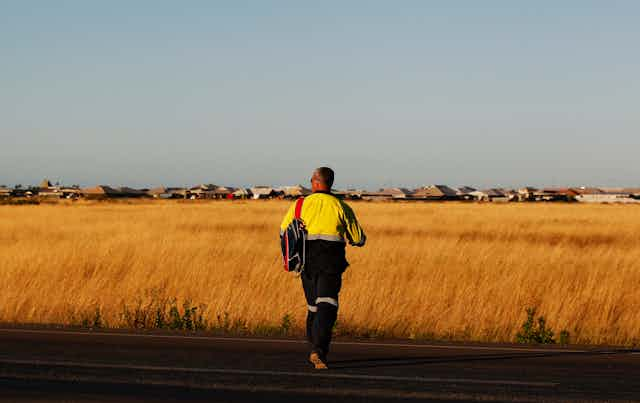The mining industry will still be important to WA’s economy in the future and new growth is unlikely to come from other industries like tourism and agriculture, new research has found. A growing, and ageing, population is likely to drive continued jobs growth in the health and social services sector, and in education and training.
Our report not only highlights what industries might provide the most employment in the future but also what form that employment will take. We found work will be more precarious and with reduced hours.
In the latest state cabinet reshuffle, WA Premier Colin Barnett indicated that changes in ministry portfolios were aimed at supporting economic diversification outside the resources sector. The spotlight has been on the tourism industry as a potential new growth sector as the mining sector slows, with the premier himself taking on the role of tourism minister.
But the government might need to rethink these policy priorities to support the creation of secure work, in a wider range of industries.
The future industrial landscape in WA
Despite a fall in iron ore prices, the mining industry continues to maintain its dominance in the WA economy, contributing about 37% of the gross value added to the economy in 2015. By contrast, the agriculture, retail, and accommodation and food services sectors in WA contributed little or no growth in value in 2014-15.
Although more jobs were created in the hospitality sector in 2014-15, employment in agriculture and retail fell over the same period. Two sectors that have delivered growth in both economic value and employment in 2014-15 are health care and social services, and arts and recreation.
Growth in industry value added to the economy and employment in WA, 2014-15 (%)

Employment in health care and social assistance in particular has expanded as a share of the state’s total employment, from 9.5% to 12% between 2010 and 2015. This is not surprising given the growing demands placed on WA’s health care system from an ageing population.
The industrial landscape in WA seems to have changed little despite the slowdown of the resources sector, which begs the question, which of the state’s industry sectors are likely to step up in the future?
There are some signs that investment in energy production, especially LNG, is starting to deliver positive employment returns, but the contribution of high-tech manufacturing to the state’s economic future is less clear, despite the state’s great strengths in science, research and innovation.
The future of the workforce in WA
West Australians now face a future characterised by weaker labour market demand, rising precariousness and reduced work hours. Western Australia’s unemployment rate has traditionally remained well below the national rate, but for the first time since 2006, the state’s unemployment rate exceeded the national average.
Unemployment rate in WA versus Australia, 2006 to 2016 (%)

Underemployment has risen more rapidly in Western Australia than in other states and territories, from 6% in 2011 to 10% in 2016. The share of WA employees on casual contracts has also been on an upward trajectory in recent years.
This signals career pathways are likely to be less straightforward in the future. It may be that more and more West Australians can expect to hold multiple jobs to make up preferred work hours, and multiple job turnovers and career shifts before retirement.
During the peak of the mining boom, the gap between the rich and the poor grew, with low-income households falling behind other households in WA at a faster rate than the rest of Australia. With the slowdown of the resources sector, there has been a fall in overall income inequality in WA.
However, there remains a persistent gap between the rich and the poor in terms of wealth. The richest 20% of WA households still hold around two-thirds of the state’s aggregate household net wealth.
Share of household net wealth by quaintile: Western Australia, 2013-14

The poorest 20% of households hold a mere 0.8% of the state’s total household net wealth by value. The ideal of closing the gap between rich and poor remains out of reach despite the end of prolonged economic bonanza that has mostly benefited the rich.
Planning for the future
Much has been made of growing economic diversification and support for non-resource sectors. However, our research questions whether industries (such as agriculture, food and tourism) are of a sufficient scale to continue the state’s economic growth.
In relation to the labour market, Western Australia’s future appears to be one marked by reduced work hours and a greater risk of job insecurity.
Clearly there needs to be a focus on designing policy settings that create secure work for the state’s working age population. This may also require a shift in labour market expectations towards more flexible career pathways in a number of industries.

